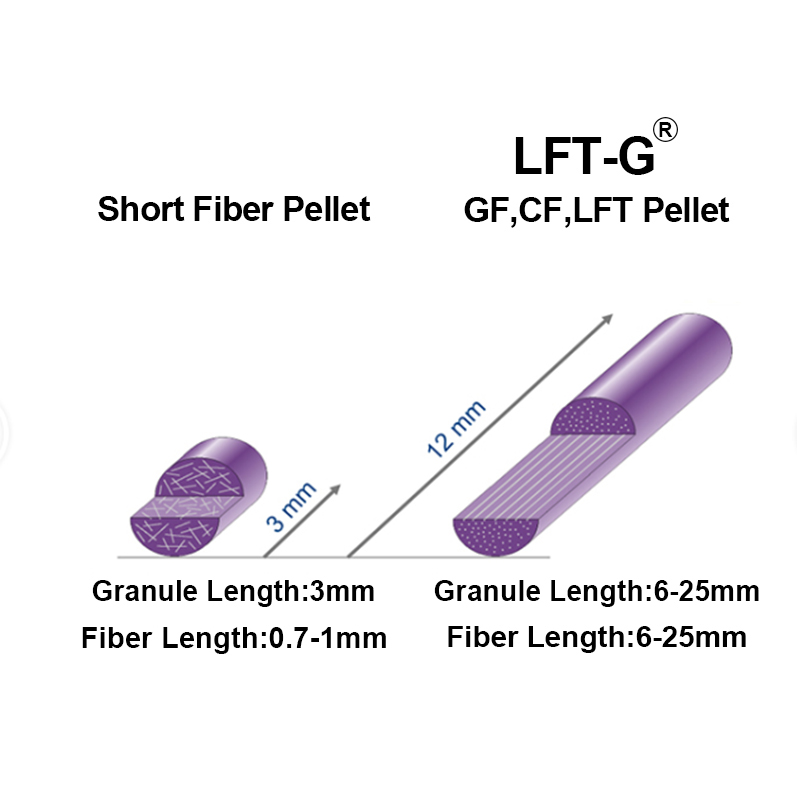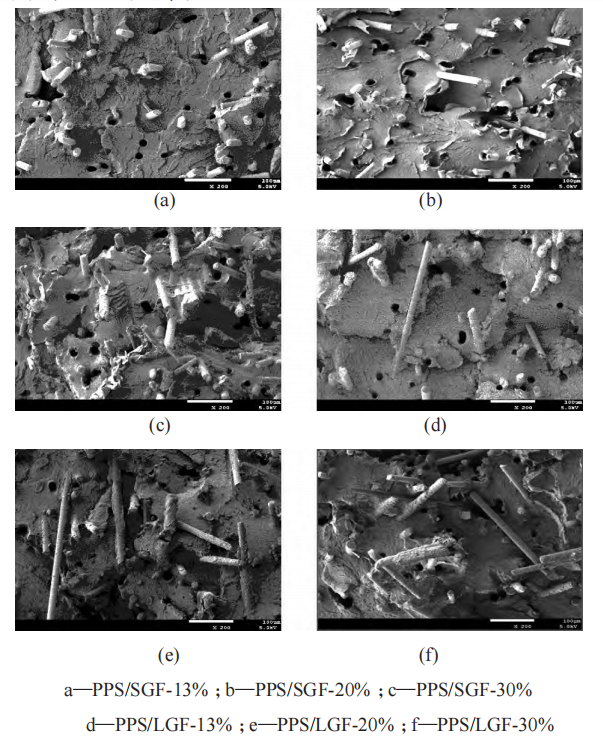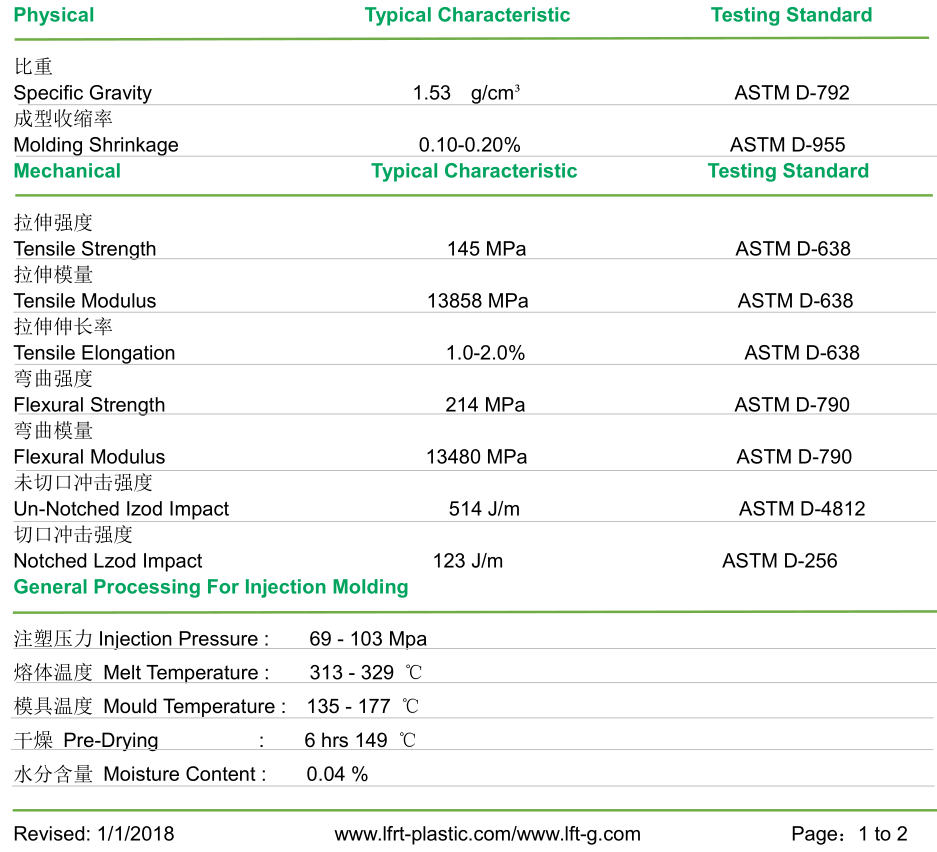oggetto numero.:
PPS-NA-LGF40Pagamento:
T/T or L/C (other payment ways also can be diorigine del prodotto:
Xiamen, ChinaColore:
Original color (also can be customized)porto di spedizione:
Xiamen, ChinaInformazioni PPS
La matrice di resina dei compositi termoplastici comprende tecnopolimeri generali e speciali e il PPS è un tipico rappresentante di tecnopolimeri speciali, comunemente noto come "oro plastico".
I vantaggi prestazionali includono i seguenti aspetti: eccellente resistenza al calore, buone proprietà meccaniche, resistenza alla corrosione, autoignifugo fino al livello UL94 V-0. Poiché il PPS ha i vantaggi delle proprietà di cui sopra e rispetto ad altri tecnopolimeri termoplastici ad alte prestazioni e ha le caratteristiche di facile lavorazione, basso costo, diventa un'eccellente matrice di resina per la produzione di materiali compositi.
Materiale composito PPS
Il materiale composito in fibra di vetro corta (SGF) di riempimento PPS presenta i vantaggi di elevata resistenza, elevata resistenza al calore, ritardante di fiamma, facile lavorazione, basso costo ed è stato applicato nel settore automobilistico, elettronico, elettrico, macchinari, strumenti, aviazione, aerospaziale, militare e altri campi.
Il materiale composito in fibra di vetro lunga (LGF) con riempimento in PPS presenta i vantaggi di elevata tenacità, bassa deformazione, resistenza alla fatica, buon aspetto del prodotto e così via. Può essere utilizzato nella girante dello scaldabagno, nel guscio della pompa, nel giunto, nella valvola, nella girante e nel guscio della pompa chimica, nella girante e nel guscio dell'acqua di raffreddamento, nelle parti di elettrodomestici e così via.
Quali sono le differenze specifiche tra i compositi PPS rinforzati con fibra di vetro corta (SGF) e lunga (LGF)?

1. Analisi delle proprietà meccaniche
The reinforcement fiber added in the resin matrix can form a supporting skeleton, and the reinforcement fiber can effectively bear the external load when the composite is subjected to external force. At the same time, energy can be absorbed by fracture, deformation and other ways to improve the mechanical properties of resin.
The tensile strength and bending strength of the composites are gradually increased by increasing the amount of glass fiber.
The main reason is that when the glass fiber content increases, more glass fiber in the composite material can withstand the action of external force. Meanwhile, due to the increase in the number of glass fibers, the resin matrix between the glass fibers becomes thinner, which is more conducive to the construction of glass fiber reinforced frame. Therefore, with the increase of glass fiber content, more stress is transferred from resin to glass fiber under external load, which effectively improves the tensile and bending properties of composite materials.
The tensile and bending properties of PPS/LGF composites are higher than those of PPS/SGF composites. When the glass fiber mass fraction is 30%, the tensile strength of PPS/SGF and PPS/LGF composites is 110MPa and 122MPa, respectively. The bending strength was 175MPa and 208MPa, respectively. The flexural elastic modulus were 8GPa and 9GPa, respectively.
The tensile strength, bending strength and bending elastic modulus of PPS/LGF composites are increased by 11.0%, 18.9% and 11.3% compared with PPS/SGF composites, respectively. PPS/LGF composites have higher length retention rate of glass fiber. Under the condition of the same glass fiber content, the composites have stronger load resistance and better mechanical properties.
When the glass fiber content is low, the impact strength of the composite decreases. The main reason is that the lower glass fiber content cannot form a good stress transfer network in the composite material, so that the glass fiber exists in the form of defects under the impact load of the composite material, resulting in the overall impact strength of the composite material is reduced.
With the increase of the glass fiber content, the glass fiber in the composite can form an effective spatial network, and the reinforcement effect is greater than that of the glass fiber tip. Under the action of external load, the external load can be transferred to the reinforced fiber better, thus improving the overall performance of the composite. In the PPS/LGF system, the length of the glass fiber is longer and the spatial network is more dense. The reinforced glass fiber has greater bearing capacity and better impact strength. When the mass fraction of glass fiber is 30%, the impact strength of PPS/LGF is increased by 19.4% from 31kJ/m2 to 37kJ/m2, and the notch impact strength is increased by 54.5%(from 7.7kJ/m2 to 11.9kJ/m2).
2. Thermal properties analysis of PPS/SGF and PPS/LGF composites
When the mass fraction of glass fiber is 30%, the thermal deformation temperature of PPS/SGF composite and PPS/LGF composite reaches 250℃ and 275℃, respectively. The thermal deformation temperature of PPS/LGF composite is 10% higher than that of PPS/SGF composite.
The main reason is that the introduction of glass fiber makes the network skeleton of reinforced fiber formed inside the composite material, which greatly improves the heat resistance of the composite material. The size of glass fiber in PPS/LGF is longer, and the heat resistance improvement advantage is more obvious.
3. Cross section analysis of PPS/SGF and PPS/LGF composites

It can be seen that the glass fiber is well dispersed in the resin. With the increase of the glass fiber content, the construction of the reinforced fiber network inside the composite material is more perfect. This is also the main reason that the overall mechanical properties of composites increase with the increase of glass fiber content.
Compared with PPS/SGF and PPS/LGF composites, the glass fiber retention rate of PPS/LGF composites is higher, which is also the main reason for the better mechanical properties of PPS/LGF composites.
Datasheet

About us

Xiamen LFT composite plastic Co., Ltd is a brand-name company that focuses on LFT&LFRT. Long Glass Fiber Series (LGF) & Long Carbon Fiber Series (LCF). The company's thermoplastic LFT can be used for LFT-G injection molding and extrusion, and can also be used for LFT-D molding. It can be produced according to customer requirements: 5~25mm length. The company's long-fiber continuous infiltration reinforced thermoplastics have passed ISO9001&16949 system certification, and the products have obtained lots of national trademarks and patents.